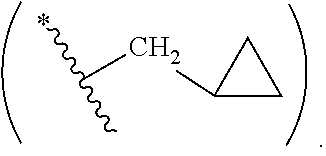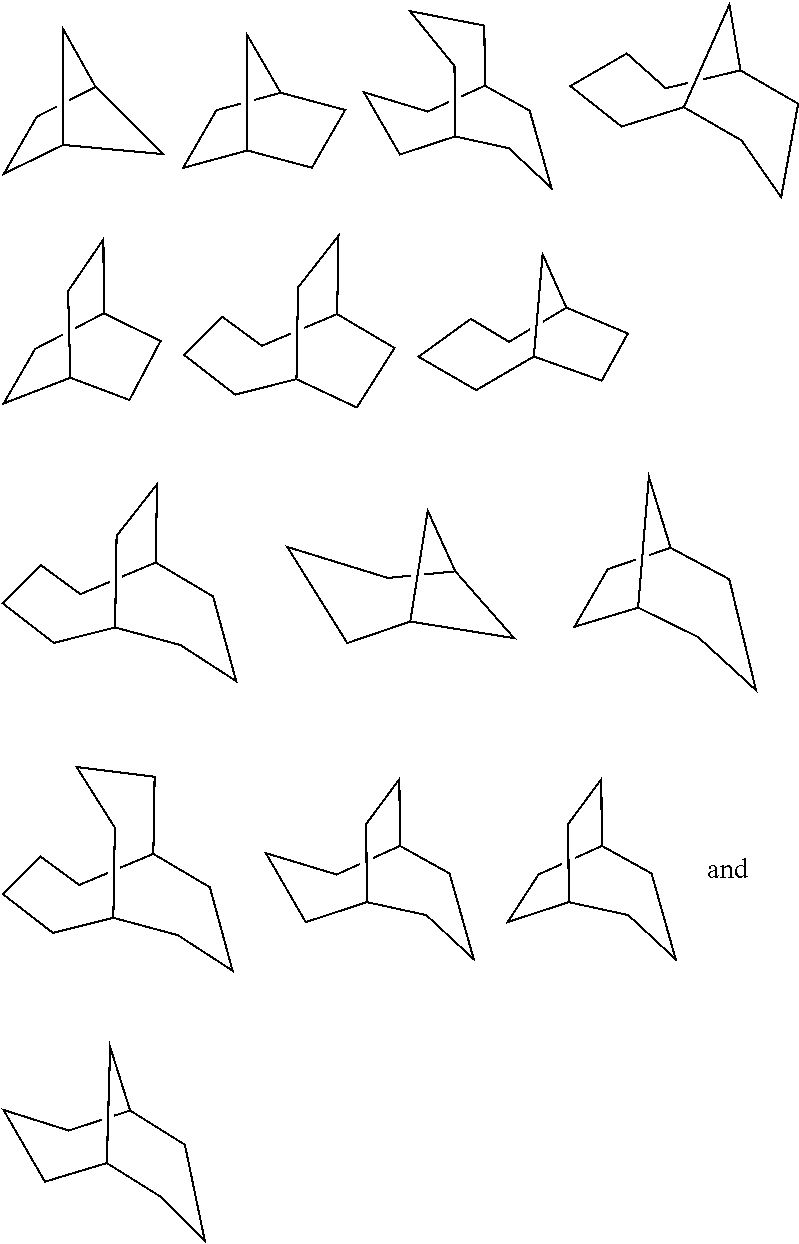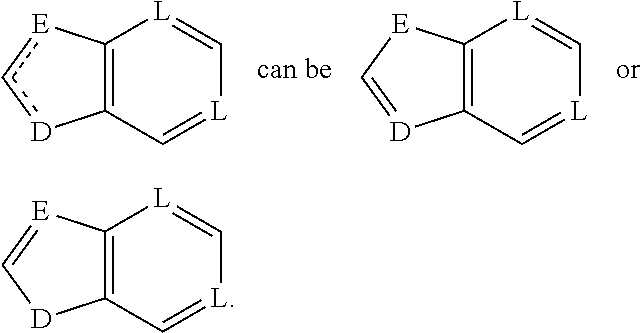Antiviral compounds
a technology of antiviral compounds and compounds, applied in the field of antiviral compounds, can solve the problems of limited usefulness of effects, and achieve the effects of improving oral bioavailability, enhancing activity against development, and improving inhibitory or pharmacokinetic properties
- Summary
- Abstract
- Description
- Claims
- Application Information
AI Technical Summary
Benefits of technology
Problems solved by technology
Method used
Image
Examples
example aa
[3481]
[3482](S)-2-{5-[4-(4,4,5,5-tetramethyl-[1,3,2]dioxaborolan-2-yl)-phenyl]-1H-imidazol-2-yl}-pyrrolidine-1-carboxylic acid tert-butyl ester: 1,4-Dioxane (300 mL) was added to a mixture of (S)-2-[5-(4-bromo-phenyl)-1H-imidazol-2-yl]-pyrrolidine-1-carboxylic acid tert-butyl ester (21.1 g, 53.7 mmol), bis(pinacolato)diboron (27.3 g, 107.5 mmol), tetrakis(triphenylphosphine)palladium (0) (3.10 g, 2.68 mmol), and potassium acetate (15.02 g, 153.0 mmol), and heated at 80° C. for 16 hours. The mixture was cooled and the resulting solid was filtered. The majority of the 1,4-dioxane was removed from the filtrate under reduced pressure and resulting residue was taken up in ethyl acetate (300 mL). The organic phase was washed with saturated sodium bicarbonate (2×150 mL), brine (100 mL) and dried over sodium sulfate. After filtration the solvent was removed from the filtrate under reduced pressure. The resulting oil was subjected to silica gel chromatography using a 330 g ISCO column and ef...
example ab
[3483]
[3484](S)-2-Pyrrolidin-2-yl-5-[4-(4,4,5,5-tetramethyl-[1,3,2]dioxaborolan-2-yl)-phenyl]-1H-imidazole hydrochloride: A solution of hydrogen chloride in 1,4-dioxane (4 N, 75 mL) was added to a solution of (S)-2-{5-[4-(4,4,5,5-tetramethyl-[1,3,2]dioxaborolan-2-yl)-phenyl]-1H-imidazol-2-yl}-pyrrolidine-1-carboxylic acid tert-butyl ester (7.0 g, 15.9 mmol) in dichloromethane (50 mL). Gas evolution was observed. After 30 minutes, a solid formed. After 1.5 hours, the resulting solid was isolated by filtration with diethyl ether washing. Any residual solvent was removed under reduced pressure to provide (S)-2-pyrrolidin-2-yl-5-[4-(4,4,5,5-tetramethyl-[1,3,2]dioxaborolan-2-yl)-phenyl]-1H-imidazole hydrochloride (5.6 g, 95%) as an off-white solid.
example ac
[3485]
[3486](S,S)-[2-Methyl-1-(2-{5-[4-(4,4,5,5-tetramethyl-[1,3,2]dioxaborolan-2-yl)-phenyl]-1H-imidazol-2-yl}-pyrrolidine-1-carbonyl)-propyl]-carbamic acid methyl ester: Diisopropylethylamine (7.63 mL, 43.8 mmol) was added to a suspension of (S)-2-pyrrolidin-2-yl-5-[4-(4,4,5,5-tetramethyl-[1,3,2]dioxaborolan-2-yl)-phenyl]-1H-imidazole hydrochloride (7.33 g, 19.5 mmol), O-(7-azabenzotriazol-1-yl)-N,N,N′,N′-tetramethyluronium hexafluorophosphate (7.6 g, 19.9 mmol) and (S) 2-methoxycarbonylamino-3-methyl-butyric acid (3.59 g, 20.5 mmol) in dimethylformamide (75 mL). All solids dissolved. After 30 min the reaction mixture was diluted with ethyl acetate (300 mL) and was washed with ½ saturated sodium chloride (1×300 mL), half saturated sodium bicarbonate (2×150 mL) and brine (1×100 mL). The organic phase was dried with sodium sulfate, filtered and the solvent was removed under reduced pressure. The resulting tan foam was subjected to silica gel chromatography with eluate of 20-100% eth...
PUM
| Property | Measurement | Unit |
|---|---|---|
| pharmaceutical composition | aaaaa | aaaaa |
Abstract
Description
Claims
Application Information
 Login to View More
Login to View More - R&D
- Intellectual Property
- Life Sciences
- Materials
- Tech Scout
- Unparalleled Data Quality
- Higher Quality Content
- 60% Fewer Hallucinations
Browse by: Latest US Patents, China's latest patents, Technical Efficacy Thesaurus, Application Domain, Technology Topic, Popular Technical Reports.
© 2025 PatSnap. All rights reserved.Legal|Privacy policy|Modern Slavery Act Transparency Statement|Sitemap|About US| Contact US: help@patsnap.com



